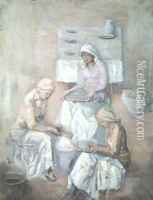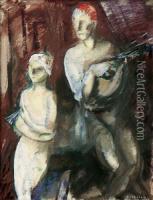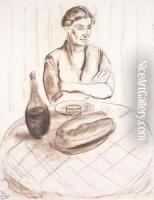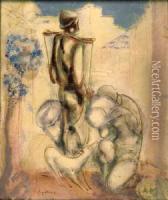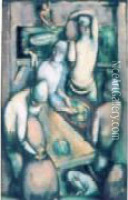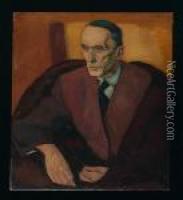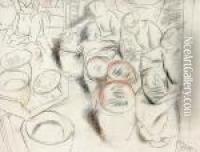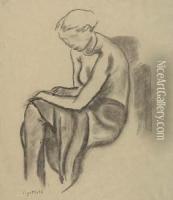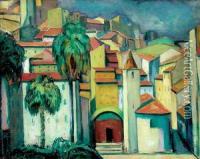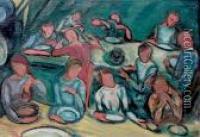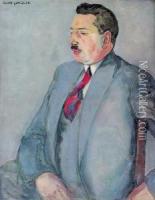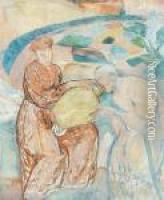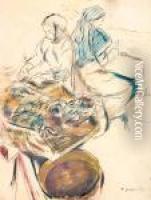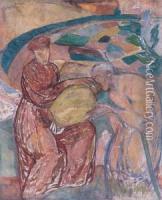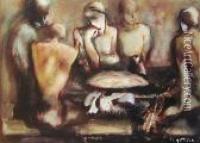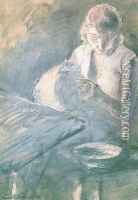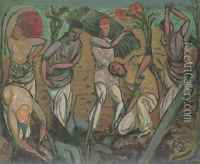Leopold Gottlieb Paintings
Leopold Gottlieb was a prominent Polish-Jewish painter known for his expressive works that often depicted themes of Jewish life and suffering. Born on November 16, 1883, in Drohobycz, then part of the Austro-Hungarian Empire, and now in Ukraine, Gottlieb grew up in an environment rich with cultural influences. He was part of a family that included several artists, including his brother, Maurycy Gottlieb, who was also a well-regarded painter.
Gottlieb began his formal art education at the Krakow Academy of Fine Arts, where he studied under the tutelage of Józef Mehoffer and Stanisław Wyspiański. Eager to expand his artistic horizons, he later moved to Vienna and then to Munich, where he continued his studies and began to develop his distinctive style. In Munich, he was exposed to the works of the German Expressionists, which had a profound impact on his artistic development.
Leopold Gottlieb's travels did not stop in Germany; he also spent time in Paris, which was the epicenter of the art world at the time. There he engaged with the bustling avant-garde scene, interacting with artists who would influence his work, such as Amedeo Modigliani and Chaim Soutine. His experiences in Paris helped to solidify his bold use of color and form.
Throughout his career, Gottlieb's work often reflected his Jewish heritage and the struggles of the Jewish people. His paintings are characterized by their emotional intensity, with subjects frequently portrayed amidst scenes of persecution or in moments of spiritual contemplation. The human figure was central to his work, often rendered with elongated forms and a sense of motion that conveyed the emotional turmoil of his subjects.
Leopold Gottlieb's life was tragically cut short when he died on March 28, 1934, in Paris, France. Despite his relatively brief career, his work left a lasting impression and continues to be celebrated for its poignant portrayal of the human condition and its contribution to the Jewish artistic legacy. His paintings are held in various collections and museums around the world, serving as a testament to his artistic prowess and the cultural context in which he lived and worked.
